Resolving the Dilemma of Rice Farming
Rice is grown and consumed worldwide. Researchers are working on solutions to make rice cultivation less water intensive and more sustainable.
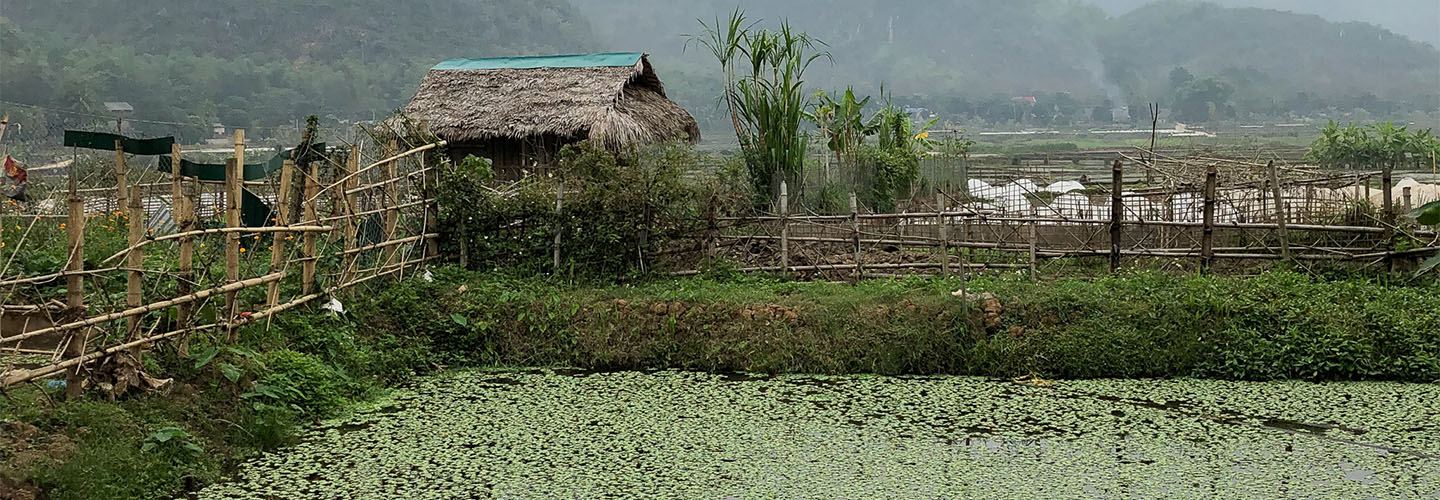
If you amble along one of the many barely paved roads in Vietnam, you’ll no doubt be struck by the calming view of the surrounding rice paddies—the long rows of small green shoots punctuated by the occasional group of women hunched over the rice plants, their conical straw hats, called non la, pointing up toward the sun from which they offer protection.
To the uninitiated, these traditionally farmed rice crops might look and feel like the best of nature—a symbiotic relationship between people and the earth. But just below the surface, a battle is raging. It is a struggle for nutrition and resources: On one side is rice and the humans who need it. On the other is the earth, whose assets are not limitless.
Our relationship with rice was not always so fraught. From its humble beginnings some 10,000 years ago, when Chinese hunter-gatherers along the Yangtze River realized they could puddle the soil—that is, turn it to mud to prevent the water from percolating away—rice has grown to be a staple food for half the world’s population. As the demand for rice grows, however, this thirsty crop is not only leaching away earth’s natural resources, it is creating nearly half of all crop-related greenhouse gas emissions worldwide.
With the world’s population expected to reach nearly 10 billion by 2050, food scarcity is as much a concern as depleting the earth’s resources. Rice sits squarely at the intersection of these two profoundly important issues. Put bluntly, rice production is a kind of “ground zero” for the difficult trade-offs we must contend with in feeding our growing population in the face of climate change. Farmers and scientists around the world are working hard to resolve this conflict—and their success will go far in helping us manage both these critical issues.
A world of rice
The amount of rice we cultivate is staggering: it is grown on about 160 million hectares (395 million acres) of the earth’s surface—about 11 percent of all the arable land available. In 2017, that land produced approximately 503 million tons of rice, 401 million tons of which was used for human food (the rest was used for animal feed and soaps, among other products). That’s 54.1 kilos per person—enough for every human on earth to consume three cups of cooked rice every day. (See “Where Rice Matters.”)
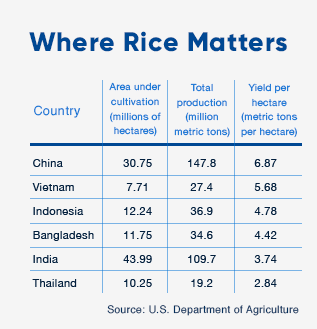
Our dependence on rice did not develop by chance. Instead, it’s largely due to rice’s ability to grow in a surprisingly wide range of environments. Rice is cultivated in upland and lowland regions, river deltas and coastal plains, some of the world’s wettest regions and some of its driest. But wherever it grows, one thing remains constant: rice needs water—lots of it. In fact, it requires two-to-three times as much water as any of the other major cereal crops. It is estimated that rice uses an astounding 30 percent of the freshwater used for all crops worldwide. In Asia, more than 80 percent of fresh water used for irrigation goes to the cultivation of rice.
A relatively small percentage of rice is grown in rainfed regions (found throughout South Asia and Africa), which does not deplete the earth’s water supply the way irrigated fields do. But rain alone is rarely enough water for rice, and rainfed upland areas produce only about one ton of rice per hectare (about two and a half acres). Rainfed lowland areas, such as river deltas and coastal regions, are often affected by drought. Lowlands produce only about one to two and a half tons of rice per hectare, barely enough for the farmers to live on. Not surprisingly, these are some of the world’s most impoverished regions.
Three quarters of the world’s rice is grown in the large fields that comprise so much of Asia’s landscape. As farmers strive to increase their yields, they traditionally flood fields to help prevent weeds from growing. These irrigated lowlands yield as much as ten tons per hectare, but that productivity comes at a high price. Rice grown in these paddies uses 40 percent of the earth’s irrigated water and 30 percent of its fresh water.
Three quarters of the world’s rice is grown in the large fields that comprise so much of Asia’s landscape.
The stupendous quantity of water used in rice farming is perhaps the most important use of water in agriculture globally. For David Arant, owner of Delta Blues Rice, based in Ruleville, Miss., it’s a perpetual dilemma. “If we don’t grow enough rice, we won’t stay in business—but if we drain our aquifers, we also won’t be in business. Arkansas got in a real pickle with their aquifer, so we’re trying to stay ahead of the curve.” Mr. Arant recently moved from traditional levee fields (which enable controlled flooding) to zero-grade farming (which uses less water) and is moving toward row rice and alternate wetting and drying (AWD) irrigation (see below). He estimates his water savings is about 20 percent. “When I use less water, it helps save the aquifer, and it also means I use less energy pumping the water. So the yield might be a little less, but so is the cost.”
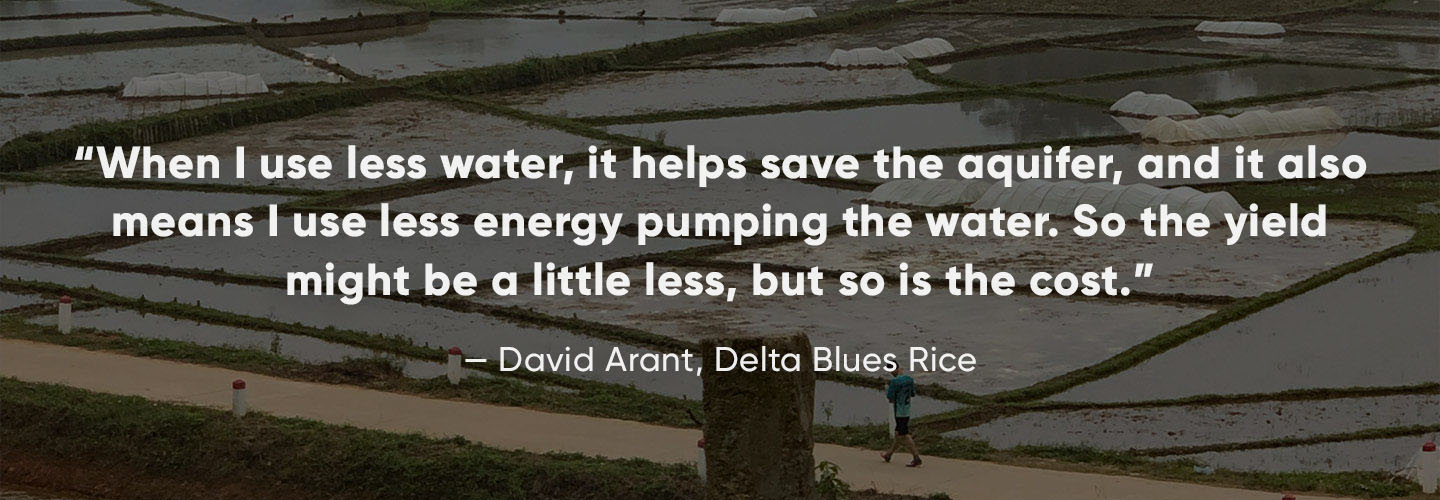
A changing climate
While increasing rice yields, which currently average four and a half tons per hectare worldwide, is clearly essential to feeding our growing population, the challenge is far greater than trying to eke out more rice from existing land: farmers must also battle the punishing effects of climate change.
Rising sea levels and increasingly severe storms currently put at least 20 million hectares of rice-growing land at risk for submergence, and that number is expected to increase. Rising sea levels also leach saline water into growing fields. While research in China is currently underway to develop more salt-water-tolerant strains, nearly all rice needs pure fresh water.
Climate change creates a problem of too much water in some areas and causes a significant and often devastating issue of drought in others, and rice is hardly a drought-resistant crop. Less rain is especially damaging to upland growing areas, where one rainless week can reduce the crop by up to 40 percent. The subsistence farmers in these regions simply can’t live on less rice than they grow now. Today, about 23 million hectares in Asia (around 15 percent of the total there) don’t receive enough water. As the drought effects of climate change grow, so will those numbers.
Today, about 23 million hectares in Asia (around 15 percent of the total there) don’t receive enough water.
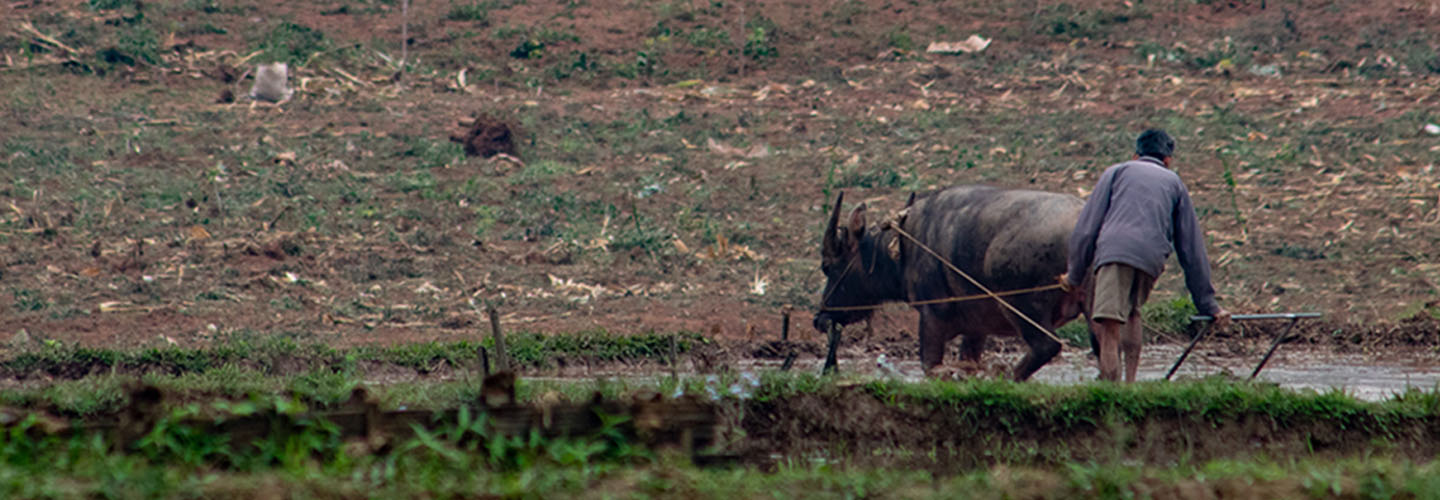
Temperature, too, can have a dramatic effect on rice production. When climate change causes the temperature to go up just 1°C, the rice-growing period can shorten by four days. That may not sound like much, but those four days translate to a 10 percent reduction in yield. For a subsistence farmer, that can be a life-altering difference.
Changes in temperature also affect the lives of many creatures and plants in the biodomes where rice grows. Warmer weather helps insects, rodents and weeds to thrive. As a result, farmers may be forced to use more chemical interventions, and that can have an adverse effect on waterfowl, migrating birds, fish, and many other interdependent creatures that contribute to the ecosystem.
A recent study shows that in addition to reducing yields, climate change actually alters the nutrient composition of rice. Researchers exposed 18 varieties of rice in experimental fields to the amount of carbon dioxide that is estimated will be in the atmosphere later in the century. The rice they grew had significantly less protein, iron and zinc, lower amounts of several B vitamins, and more vitamin E. The lack of rice nutrition could have a serious impact on the health of billions of people who count on rice as a major source of their calories and nutrients.
A systematic solution
A crop-management technique called systematic rice intensification (SRI) can help farmers grow more nutrient-dense rice and decrease their reliance on chemical interventions. “In India, we have studies showing that when they use these alternative management methods for soil, plants, water and nutrients, the micronutrient content in the grains goes up for copper, zinc, iron, and manganese by 30 to 60 percent,” says Norman Uphoff, professor emeritus of government and international agriculture at Cornell University and senior advisor to the SRI International Network and Resources Center. With SRI, farmers who use a combination of reduced plant density, biological matter to promote the health of the soil, and controlled or intermittent water application average six to eight tons of rice per hectare. “Where government supports it and farmers are behind it, we have incredible stories,” says Dr. Uphoff. “There are about 20 million farmers using it now.”
Small subsistence farmers are often understandably reticent to try new methods of farming, and when they do, may face ridicule from their village. Uphoff tells the story of a Bengali farmer who worked his field at night because he was embarrassed that other farmers might make fun of his SRI practices. His wife called him a fool, saying he was risking his family’s food supply and that she would have nothing to do with it. But after 15 days, the seedlings came up. He coerced his wife to go to the field by telling her he was too sick to tend it. She came running back, saying, “It’s a miracle!” And it was, in a way: he got about an eight-ton yield. When the once-scornful neighboring farmers saw his result, many of them also switched to SRI practices.
Recent studies show SRI could have a profound impact on rice-growing regions. Researchers project that if farmers in Senegal changed their irrigated lowland rice cultivation to SRI, they would save US$11 million in water-related costs and gain $17 million from the additional yield. When the system was implemented in Cambodia’s rainfed lowland paddies, it was so successful that if it were adopted country-wide, it would increase revenue by more than $800 million, according to estimates.
Further afield
SRI is one of many crop-management practices scientists and farmers hope will increase yield while doing less damage to the environment. Research is underway to find new planting, growing and irrigation methods, including better soil management with less chemical intervention, direct seeding, and crop rotation.
Scientists are also looking at the gene pool from 110,000 types of rice to find traits that are most likely to adapt to climate change. Hope lies in the development of varieties like “C4” rice, which boosts the process of photosynthesis and thus could yield up to 50 percent more grain while using water more efficiently. Elsewhere, the International Rice Research Institute (IRRI) recently announced a collaboration with Corteva Agriscience™ to develop new rice varieties and direct-planting techniques intended to boost production and reduce the environmental impact of rice cultivation.
Flood- and drought-tolerant varieties are also in development. The aptly named scuba rice, developed through conventional breeding techniques, can be submerged for two weeks. On the other end of the spectrum, a drought-tolerant variety that yields about one additional ton per hectare under drought conditions is currently in use in several countries.
Some smaller rice farmers are turning to ancient methods to help improve their crops with fewer production inputs. With “integrated rice-duck farming,” farmers have found that ducks guard paddies from insects, help weed the fields, and leave behind manure for fertilizer. It’s a win for the farmers, a win for their fields—and a win for the ducks.
Rice’s greenhouse effect
In one sense, it seems that the holy grail of rice farming is to develop crop-management methods that enable rice to use less of the earth’s water and land and better tolerate our changing climate. But the picture is even more complex, because when it comes to climate change, rice is no innocent victim.
Nearly 20 percent of all man-made methane gas emissions are caused by flooded rice paddies during the decomposition of organic material in the soil. And methane bites back: it traps heat in the atmosphere and is a major cause of global warming.
While there is no single solution to reducing emissions, there are some practices that help, although each has its own offsetting negative effects.
The traditional, and still the most widespread, method for establishing rice is through transplanting, where pregerminated seedlings are moved into the wet field. With a method called direct seeding, dry seed is spread right onto the soil and ploughed while the soil is dry. That creates significantly less methane, uses less water and requires less labor.
Alternate wetting and drying (AWD), a rice-farming practice advocated by the IRRI, decreases the amount of time fields are flooded and can reduce methane production by 60 to 90 percent. The exact amount of water required and the number of days between flooding and nonflooding vary based on soil, weather and other factors, and some land areas are more suitable to AWD practices than others.
The downside to AWD is that it increases the production of yet another greenhouse gas, nitrous oxide, which is 300 times more potent than carbon dioxide. It is produced from the excess nitrogen released from unsaturated rice fields. Intermittently flooded fields can emit up to 45 times more nitrous oxide than traditional continuously flooded fields. To reduce the amount of excess nitrogen in the soil, reducing fertilizer waste and managing flooding and drainage methods more carefully are key.
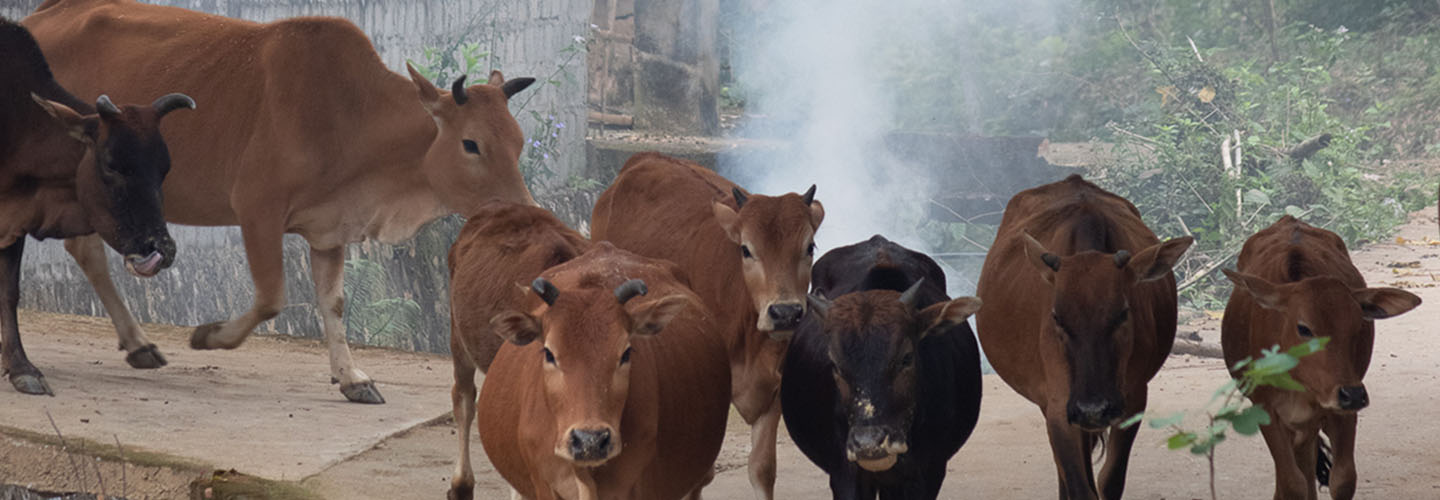
Methane is also produced after rice is harvested, when farmers dispose of the husks and straw by either burning it or turning it back into the soil. To make better use of this wasted material and reduce the methane its disposal creates, farmers are experimenting with alternatives including composting, using the straw as animal feed, partially burning the residue to produce biochar (which increases soil fertility), and growing mushrooms in the straw.
While it is not a new practice, growing mushrooms in the straw is gaining traction. In Vietnam, where at least 20 million tons of rice straw are burned annually, people in the communities around the paddies often get sick from inhaling the smoggy air. Entrepreneur and TED fellow Trang Tran grew up seeing the ill effects, and created her company, Fargreen, to encourage farmers to limit the practice. Fargreen trains and collaborates with farmers to grow mushrooms in the straw using no chemicals. After the mushrooms are cultivated, the leftover material is used as biofertilizer for the rice fields, which closes the sustainability loop, greatly reduces greenhouse emissions and increases farmers’ income.
Methane emissions can also be reduced with innovative hybrid varieties. One such variety can reduce cooking time by up to four minutes. While at first glance that might seem relatively unimportant, because of the enormous quantity of rice that is cooked around the globe, that one small change could save more than 10,000 years of cooking time every day—which could result in massive global energy savings.
By necessity, farmers and scientists are learning how to produce the rice the world needs without harming the very earth in which it grows. Rather than battling to eke out every last bit of nourishment the earth has to offer, they continue to research and discover more-sustainable growing practices. Thought leaders acknowledge that collaboration among organizations, countries, and farmers is key. Advances in breeding programs, cultivation processes, and nutrient development, all of which look to cutting-edge science as well as to ancient practices, must be shared among all stakeholders.
Additional Links
Combatting Food Insecurity through Sorghum
How Research Supports Kenyan Coffee